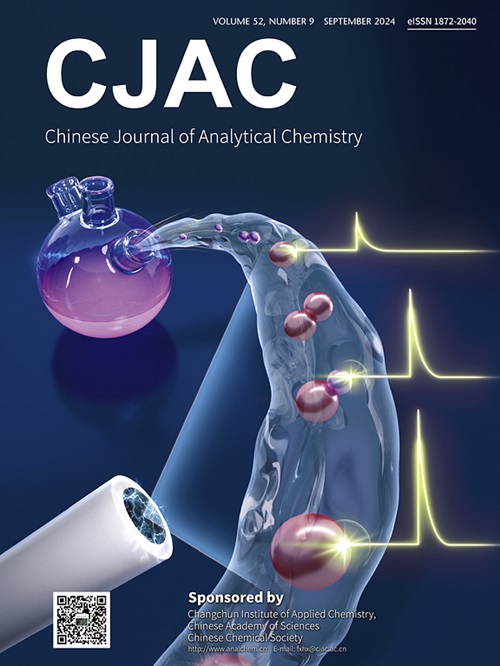锌铝层状双氢氧化物对克林霉素水溶液的高级电化学检测:绿色化学方法及细胞毒性评价
IF 1.3
4区 化学
Q4 CHEMISTRY, ANALYTICAL
引用次数: 0
摘要
克林霉素(CLN)等抗生素在水生环境中的广泛存在造成了严重的生态和健康风险。本研究介绍了一种基于共沉淀法合成的Zn-Al层状双氢氧化物(LDH)纳米粒子的简单、经济的电化学传感器,用于环境样品中的CLN检测。通过FTIR, SEM, TEM, BET和TGA表征,证实了多孔的纳米片状结构有利于提高电催化活性。该传感器的检测限为0.044µM(0.0187µg/mL),定量限为0.15µM(0.0638µg/mL),线性范围为4 ~ 700µM,优于传统的高效液相色谱方法。pH为3.6时检测效果最佳,具有良好的选择性、稳定性和重复性。自来水、尼罗河水、地下水和废水样品的应用证实了其实用性。采用绿色化学指标(包括AGREEprep、ESA和AMVI)对该方法的环境影响进行了评估,证明了其生态友好性。对WI-38细胞的细胞毒性测试显示出浓度依赖效应,支持其在环境和生物医学背景下的安全使用。该材料的总成本估计为8.14美元/克,证实了其大规模应用的可承受性。本文章由计算机程序翻译,如有差异,请以英文原文为准。

Advanced electrochemical detection of clindamycin from aqueous solutions using Zinc Aluminium layered double hydroxide: Green chemistry approaches and cytotoxicity evaluation
The widespread presence of antibiotics like clindamycin (CLN) in aquatic environments poses serious ecological and health risks. This study introduces a simple and cost-effective electrochemical sensor based on Zn-Al layered double hydroxide (LDH) nanoparticles, synthesized via coprecipitation, for CLN detection in environmental samples. Characterization by FTIR, SEM, TEM, BET, and TGA confirmed a porous, nano-flake structure conducive to enhanced electrocatalytic activity. The sensor exhibited excellent performance with a detection limit of 0.044 µM (0.0187 µg/mL), a quantification limit of 0.15 µM (0.0638 µg/mL), and a linear range of 4–700 µM, outperforming traditional HPLC methods. Optimal detection was achieved at pH 3.6, with good selectivity, stability, and reproducibility. Application to tap water, Nile river water, groundwater, and wastewater samples confirmed its practical utility. The method's environmental impact was evaluated using green chemistry metrics including AGREEprep, ESA, and AMVI demonstrating its eco-friendliness. Cytotoxicity testing on WI-38 cells showed concentration-dependent effects, supporting its safe use in environmental and biomedical contexts. The total cost of the material was estimated at 8.14 USD/g, confirming its affordability for large-scale applications.
求助全文
通过发布文献求助,成功后即可免费获取论文全文。
去求助
来源期刊
CiteScore
3.60
自引率
25.00%
发文量
17223
审稿时长
35 days
期刊介绍:
Chinese Journal of Analytical Chemistry(CJAC) is an academic journal of analytical chemistry established in 1972 and sponsored by the Chinese Chemical Society and Changchun Institute of Applied Chemistry, Chinese Academy of Sciences. Its objectives are to report the original scientific research achievements and review the recent development of analytical chemistry in all areas. The journal sets up 5 columns including Research Papers, Research Notes, Experimental Technique and Instrument, Review and Progress and Summary Accounts. The journal published monthly in Chinese language. A detailed abstract, keywords and the titles of figures and tables are provided in English, except column of Summary Accounts. Prof. Wang Erkang, an outstanding analytical chemist, academician of Chinese Academy of Sciences & Third World Academy of Sciences, holds the post of the Editor-in-chief.

 求助内容:
求助内容: 应助结果提醒方式:
应助结果提醒方式:


